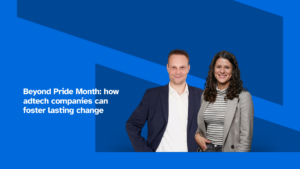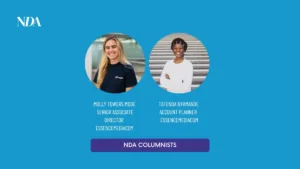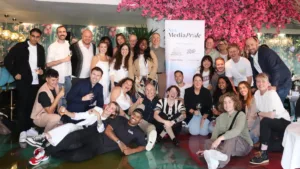With the launch of NDA’s Media Pride, we talk to leaders across the industry to understand the opportunities and challenges within our industry’s LGBTQIA+ community. Next up is Jerry Daykin, Head of Global Media at Beam Suntory.
What is the biggest challenge for members of the LBTQIA+ community in the digital industry and how is it being overcome?
The 2023 All In Census has once again shown that LGBTQIA+ representation in the advertising industry is reasonably strong (at 11%), but that it’s notably less visible and present in the C-suite, where it drops to 6%. Critically, 27% of LGBTQIA+ correspondents said they were likely to leave their company in the next 12 months, and an unusually high 21% related high levels of work stress & anxiety.
We’re a creative industry that seems on the face of it to attract and welcome members of the queer community, but is not quite so successful at nurturing, developing & accelerating that talent.
While active internal homophobia is something that is very unlikely to be tolerated in our industry, there are more subtle factors at play and we need to take more steps toward acceptance and inclusion. Some of the negative stereotypes that still impact women in our industry can be amplified with LGBTQIA+ women. Meanwhile, while the industry is broadly progressive towards more fluid expressions of gender, the current artificially-stoked culture wars do seem to be having negative effects on the mental wellbeing of friends & colleagues.
We tend to think of ourselves as a fairly progressive industry, but we need to recognise that that is something which requires continual effort & education, and without that it’s easy to slip back. It’s also important for companies to really scrutinize their institutional policies and HR benefits to ensure these fairly meet the needs of their diverse modern employees.
What three things could employer companies do to make the digital industry better for the LBTQ+ community?
- Actively lean into the voluntary organisations which have been setup to support LGBTQIA+ people in our industry – find out how you can volunteer for, help fund or more broadly promote the work of Outvertising. Encourage your teams to be active members of networking groups like Intermedia and Intercomms.
- Support and resource LGBTQIA+ networks/Employee Resource Groups which may exist in your organization, or encourage them to develop. Give them strong executive sponsorship and visibility year round, not just in Pride month.
- Run simple allyship or role model training across your organization (Outvertising can help run classes for a small donation if you need outside support). Continually educate your teams on the small steps they can take to build a more inclusive environment, for instance the simple act of including pronouns in email signatures, which can benefit many people within the LGBTQIA+ community and beyond.
What impact can a more inclusive approach to LBTQ+ communities in our industry have on society as a whole?
The digital industry can have a big impact on people and society. Advertising doesn’t have to be purposeful & pride focused to have a positive impact (although it can be great when it is!), as even casual representation & inclusion can go a long way towards making people feel seen and included.
Advertising funds a large amount of the wider content, news & entertainment we enjoy. As a result, advertisers can positively influence publications by sponsoring & supporting inclusive editorial and pushing for more to exist. Advertisers also have a responsibility to ensure we are not funding hate or regressive opinions that endanger our consumers.
What support structures and organisations are most important and effective to the LGBTQIA+ community in the digital industry?
I’m a firm believer in the importance of a well-resourced & well-empowered ERG (Employee Resource Group). These bottom-up initiatives help bring together members of communities and their allies around issues such as sexuality, race, gender, ability and more. I think it’s critical for companies to encourage the development and freedom of such groups, but also that we recognize it isn’t the responsibility of marginalized individuals to single-handedly drive change in their businesses.
They can be useful consultants and councils, but ultimately inclusion needs to be strongly driven from the top down through actions as well as words. Companies need to set aside budgets to invest in being more inclusive and restoring fair balance, like most things it won’t happen without resource and objective focus.
How effective are trade bodies, industry awards, and the industry press at supporting and promoting LGBTQIA+ inclusivity?
There’s always a delicate balance to play in awards and the like whereby dedicated categories & recognition can shine a light on LGBTQ+ inclusive work, but it can also keep it in a ‘diversity’ silo and stop it being accepted for the mainstream impact it can have.
That said, whilst representation within our industry is relatively strong, inclusion within the adverts and creatives we produce remains weak and often stereotypical, so until we become much better at delivering inclusive marketing, I’d call on industry bodies to do even more to specifically call out success stories. I’ve written a whole book, handily entitled ‘Inclusive Marketing’ to practically help more of us get there.












